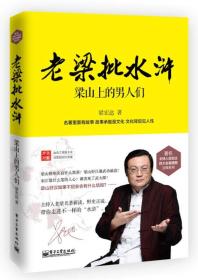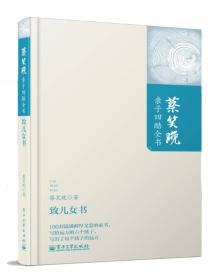
高等学校信息领域全英文课程:现代控制理论(英文版)
正版单本书籍,消毒发货,放心下单,图文不符咨询客服,无光盘等附加品
¥ 99.55 九五品
仅1件
作者刘向杰、张金芳 著
出版社科学出版社
出版时间2016-02
版次1
装帧平装
上书时间2024-10-08
- 最新上架
商品详情
- 品相描述:九五品
- 商品描述
- 部分教材类会有笔记划线,介意勿拍
图书标准信息
- 作者 刘向杰、张金芳 著
- 出版社 科学出版社
- 出版时间 2016-02
- 版次 1
- ISBN 9787030471765
- 定价 52.00元
- 装帧 平装
- 开本 32开
- 纸张 胶版纸
- 页数 196页
- 字数 257千字
- 正文语种 英语
- 丛书 高等学校信息领域全英文课程;“十三五”系列规划教材
- 【内容简介】
-
《高等学校信息领域全英文课程:现代控制理论(英文版)》是“现代控制理论”双语教学教材,注重培养学生的国际视野和竞争能力。内容主要包括状态变量及状态空间表达式、线性空间变换、线性状态空间方程求解、系统稳定性、系统能控性、能观性以及状态反馈与状态观测。全书贯穿了MATLAB在线性系统中的应用方法。
《高等学校信息领域全英文课程:现代控制理论(英文版)》可作为高等院校自动化专业本科生的教材,也可供相关专业的教师参考。 - 【目录】
-
前言
Chapter 1 System Model
1.1 Introduction
1.2 Models of Systems
1.2.1 Differential Equation
1.2.2 Transfer Function
1.2.3 The State-space Model
1.3 Transition from One Mathematical Modelto Another
1.3.1 From Differential Equation to Transfer Function for SISO Systems
1.3.2 From Transfer Function to Differential Equation for SISO Systems'
1.3.3 From G(s) to g(t) and Vice Versa
1.3.4 From State Equations to Transfer Function Matrix
1.3.5 From Transfer Function Matrix to State Equations for SISO Systems'
1.4 Summary
Appendix: Three Power Generation Models
Exercise
Chapter 2 Anear Transformation of State Vector
2.1 Linear Algebra
2.2 Transform to Diagonal Form and Jordan Form
Exercise
Chapter 3 Solution of State Space Model
3.1 Introduction
3.2 Solution ofLTI State Equations
3.3 State TransferMatrix
3.3.1 Properties
3.3.2 Calculating the state transition matrix
3.4 Discretization
3.5 Solution of Discrete-Time Equation
3.6 Summary
Exercise
Chapter 4 Stable Analysis
4.1 Introduction
4.2 Definition
4.3 Stability Criteria
4.3.1 Lyapunov's Second Method
4.3.2 State Dynamics Stability Criteria for Continuous Linear Systems
4.3.3 State Dynamics Stability Criteria for Discrete Systems
4.4 Summary
Exercise
Chapter 5 Controllability and Observability
5.1 Introduction
5.2 Definition
5.2.1 Controllability
5.2.2 Observability
5.3 Criteria
5.3.1 Controllable Criteria
5.3.2 Controllable Examples
5.3.3 Observable Criteria
5.3.4 Observable Examples
5.4 Duality System
5.4.1 Definition
5.4.2 Properties of Duality Systems
5.5 Canonical Form
5.5.1 Controllability Canonical Form of Single-Input Systems
5.5.2 Observability Canonical Form of Single-Output Systems
5.5.3 Example
5.5.4 Observability and Controllability Canonical Form ofMulti-Input Multi-Output Systems
5.6 System Decomposition
5.6.1 Controllability Decomposition
5.6.2 Observability Decomposition
5.6.3 Controllability and Observability Decomposition
5.6.4 Minimum Realization
5.7 Summary
Exercise
……
Chapter 6 State Feedback and Observer
参考文献
相关推荐
-

高等学校信息领域全英文课程:现代控制理论(英文版)
九品北京
¥ 88.00
-

高等学校信息领域全英文课程:现代控制理论(英文版)
全新北京
¥ 95.00
-

高等学校信息领域全英文课程:现代控制理论(英文版)
全新北京
¥ 95.00
-

高等学校信息领域全英文课程:现代控制理论(英文版)
全新北京
¥ 95.00
-

高等学校信息领域全英文课程:现代控制理论(英文版)
九五品北京
¥ 93.00
-

高等学校信息领域全英文课程:现代控制理论(英文版)
全新北京
¥ 95.00
-

高等学校信息领域全英文课程:现代控制理论(英文版)
全新北京
¥ 95.00
-

高等学校信息领域全英文课程:现代控制理论(英文版)
全新北京
¥ 95.00
-

高等学校信息公开办法读本
八五品东莞
¥ 11.62
-

高等学校信息公开办法读本
八五品东莞
¥ 12.65
— 没有更多了 —













以下为对购买帮助不大的评价